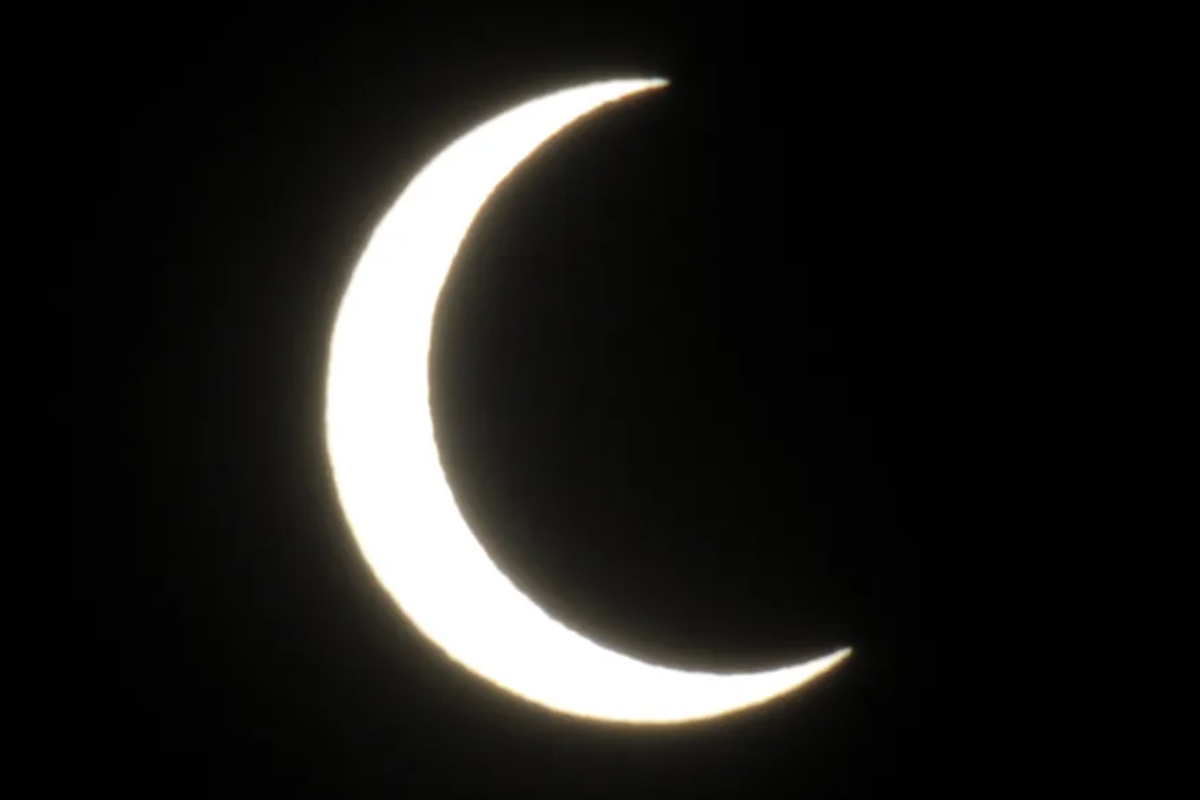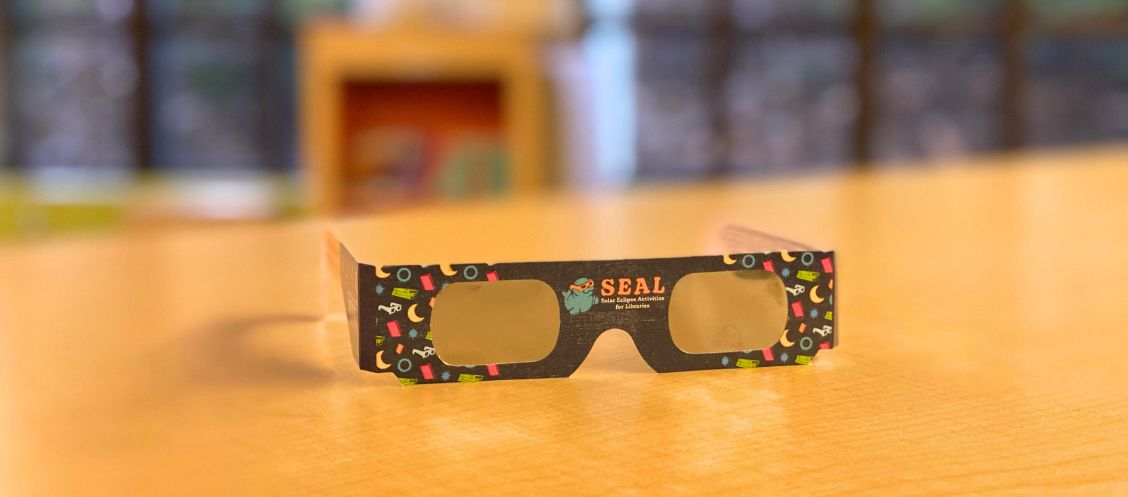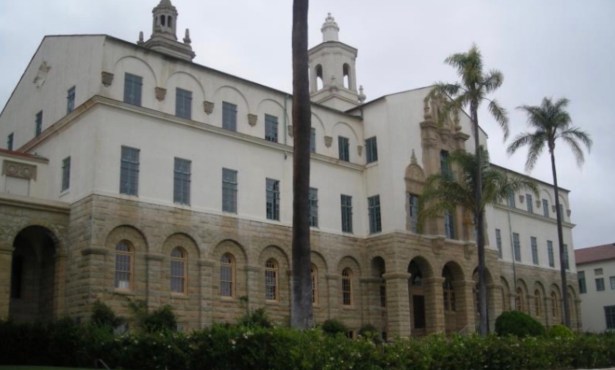Partial Solar Eclipse to Dim Saturday-Morning Sky in Santa Barbara
Area Libraries Handing Out Free Eclipse Glasses; Astronomical Unit Hosting Viewing Party in Goleta

This Saturday, millions will be able to catch a glimpse of an annular solar eclipse as it cuts its way southeast across the Western Hemisphere.
An annular solar eclipse occurs when the moon is at its farthest point from Earth and passes between the sun and Earth, bathing the Earth in a lunar shadow. Because the moon is farther away from Earth and appears smaller than the sun, the moon only partially covers the sun, creating a “ring of fire” around the moon for those in the right viewing areas.
The eclipse will cross North, Central, and South America, starting in Oregon Saturday morning and ending in Brazil later in the day. While Santa Barbara County is outside the path of annularity — meaning eclipse viewers here won’t be treated to the “ring of fire” effect — sun-spotters will still be able to see the sun partially obscured by the moon.

In anticipation of the rare event — the next of which won’t occur until 2041 — area libraries are handing out free eclipse glasses to safely view the celestial spectacle. Glasses can be picked up at Santa Barbara Public Libraries, including the Central, Eastside, and Montecito branches, as well as Carpinteria Library, while supplies last.
Those hoping to take a closer look at the partial eclipse can head over to Goleta’s Camino Real Marketplace on Saturday morning for an eclipse viewing party cohosted by the Santa Barbara Astronomical Unit and the Santa Barbara Museum of Natural History, which will have specially filtered solar telescopes set up in the sunken plaza outside the movie theater. You can drop by anytime between 7 a.m. and noon to ask astronomers questions and buy $3 eclipse glasses.
The moon will begin to move in front of the sun starting at 8:03 a.m., according to the Astronomical Unit, and the best viewing will be 9:23-9:25 a.m., when the sun will be 70 percent covered by the moon. By 10:48 a.m., the moon will have completely moved out of the sun’s way.
It is never safe to look directly at the sun during an annular eclipse without wearing solar viewing or eclipse glasses. The eclipse can also be viewed using an indirect viewing method, such as a pinhole projector. Learn how to make a pinhole box projector here.




You must be logged in to post a comment.